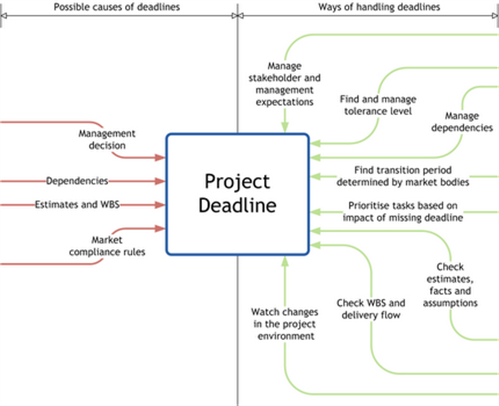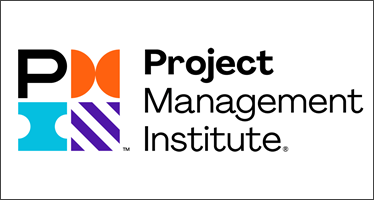What is User Provisioning & Deprovisioning?
Last updated: March 02, 2024 Read in fullscreen view
- 01 Oct 2020
 Fail fast, learn faster with Agile methodology 696
Fail fast, learn faster with Agile methodology 696 - 14 Oct 2021
 Advantages and Disadvantages of Time and Material Contract (T&M) 579
Advantages and Disadvantages of Time and Material Contract (T&M) 579 - 19 Oct 2021
 Is gold plating good or bad in project management? 521
Is gold plating good or bad in project management? 521 - 18 Oct 2020
 How to use the "Knowns" and "Unknowns" technique to manage assumptions 494
How to use the "Knowns" and "Unknowns" technique to manage assumptions 494 - 08 Oct 2022
 KPI - The New Leadership 444
KPI - The New Leadership 444 - 23 Sep 2021
 INFOGRAPHIC: Top 9 Software Outsourcing Mistakes 300
INFOGRAPHIC: Top 9 Software Outsourcing Mistakes 300 - 10 Dec 2023
 Pain points of User Acceptance Testing (UAT) 254
Pain points of User Acceptance Testing (UAT) 254 - 28 Dec 2021
 8 types of pricing models in software development outsourcing 252
8 types of pricing models in software development outsourcing 252 - 19 Apr 2021
 7 Most Common Time-Wasters For Software Development 250
7 Most Common Time-Wasters For Software Development 250 - 11 Jan 2024
 What are the Benefits and Limitations of Augmented Intelligence? 241
What are the Benefits and Limitations of Augmented Intelligence? 241 - 13 Dec 2020
 Move fast, fail fast, fail-safe 237
Move fast, fail fast, fail-safe 237 - 31 Oct 2021
 Tips to Fail Fast With Outsourcing 228
Tips to Fail Fast With Outsourcing 228 - 06 Feb 2021
 Why fail fast and learn fast? 217
Why fail fast and learn fast? 217 - 06 Nov 2019
 How to Access Software Project Size? 192
How to Access Software Project Size? 192 - 18 Aug 2022
 What are the consequences of poor requirements with software development projects? 183
What are the consequences of poor requirements with software development projects? 183 - 10 Nov 2022
 Poor Code Indicators and How to Improve Your Code? 164
Poor Code Indicators and How to Improve Your Code? 164 - 08 Jan 2024
 Ask Experts: Explicitation/Implicitation and Elicitation; two commonly used but barely unraveled concepts 154
Ask Experts: Explicitation/Implicitation and Elicitation; two commonly used but barely unraveled concepts 154 - 01 Mar 2024
 (AI) Artificial Intelligence Terms Every Beginner Should Know 152
(AI) Artificial Intelligence Terms Every Beginner Should Know 152 - 26 Dec 2023
 Improving Meeting Effectiveness Through the Six Thinking Hats 136
Improving Meeting Effectiveness Through the Six Thinking Hats 136 - 01 Mar 2023
 Bug Prioritization - What are the 5 levels of priority? 129
Bug Prioritization - What are the 5 levels of priority? 129 - 17 Feb 2022
 Prioritizing Software Requirements with Kano Analysis 129
Prioritizing Software Requirements with Kano Analysis 129 - 05 Jan 2024
 Easy ASANA tips & tricks for you and your team 93
Easy ASANA tips & tricks for you and your team 93 - 12 Mar 2024
 How do you create FOMO in software prospects? 63
How do you create FOMO in software prospects? 63 - 14 Mar 2024
 Why should you opt for software localization from a professional agency? 51
Why should you opt for software localization from a professional agency? 51
What is User Provisioning?
User Provisioning / User Account Provisioning is an Identity Access Management (IAM) process that ensures internal user/employee accounts are created, updated, deleted, and given proper access across multiple applications, modules and systems at the same time. User information such as name, attributes, group name, and other associated data (metadata) are available through account and access management, which allows you to grant or prohibit access based on your needs. User Provisioning can be triggered by events like hiring, promotions, and transfers.
In other words, user provisioning helps you provide the right level of access to the right users during onboarding, update access throughout employment, and—during the deprovision process—remove access when an employee leaves the organization.
Provisioning tools also automatically aggregate and correlate identity data from HR, CRM, email systems and other "identity stores." Fulfillment is initiated via self-service, management request or HR system changes. Regulatory compliance and security efficiencies continue to drive most user-provisioning implementations.
What is User Deprovisioning?
Deprovisioning, on the other hand, refers to the process of disabling or removing a user's access to a system or application. This process typically includes disabling the user's account, revoking permissions, and removing the user from any groups or roles they were a member of. Deprovisioning is usually done when an employee leaves a company, or when a user's access is no longer needed for some other reason. It is important to have a well-defined process in place for both provisioning and deprovisioning to avoid security breaches and compliance issues.
To put it all together
There are simple models and advanced models to cut out for each organization.
Provisioning refers to onboarding new users: creating a user account, providing access rights to the required resources, and enrolling in group memberships. Deprovisioning applies to the offboarding process, revoking employee access when needed.






















